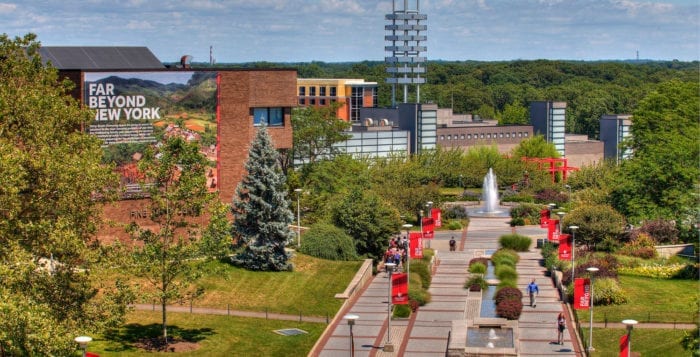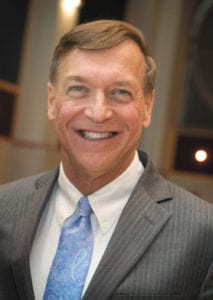Stanley touches on SBU history, diversity, deficit during annual address

During his annual address, Stony Brook University’s president celebrated the past and looked forward to the future.
President Dr. Samuel L. Stanley Jr., delivered his State of the University Address to the Stony Brook campus community Sept. 27.
He said the first graduating class of 1961 consisted of approximately 40 students. In 2017, the university granted 7,313 degrees and certificates, including master’s and doctoral degrees that did not exist the first year.
The number of buildings has also changed on campus from a few to 136 structures.
Stanley said the students attending the university come from more diverse backgrounds compared to bygone decades. Diversity he said is something Stony Brook is committed to.
“We hope to reflect the diversity of the state we live in as well as the country we live in,” he said.
Stanley said while the number of international students has increased since 1957, this is the first year the amount of freshmen from other countries has decreased. He said he has received feedback that a number of international students are hesitant to study in the United States due to changes in immigration policies. The president is a supporter of the Deferred Action for Childhood Arrivals plan instituted by former President Barack Obama (D). He said students protected by DACA at the university come from tough economic backgrounds yet succeed academically and epitomize the American Dream. He said SBU is committed to working with legislators to create a pathway for the students.

“Stony Brook University I hope has communicated to the campus and the world our support for these students,” he said.
Stanley said the university is trying to change the way it recruits in order to create more diversity within the crop of faculty members, as well.
Another development at Stony Brook through the years has been the change in athletic success. The president said most teams originally operated as club sports, then developed into Division 3 and eventually Division 1 teams.
Stanley touched on the addition of Southampton Hospital as part of the Stony Brook University medicine family, which occurred this past summer.
“It’s really going to improve service at both hospitals,” he said.
The president said with a $1.7 billion budget, Stony Brook University Hospital serves 400,000 patients and offers a Level I trauma center, while the newly dubbed Stony Brook Southampton Hospital serves 100,000 with a $175 million budget.
He said the university is currently working on the Medicine and Research Translation Building and construction is scheduled to be completed in spring of 2018. The eight-level 240,000-square-foot building and 225,000-square-foot new Bed Tower will create opportunities for scientists and physicians to work side by side in the hopes of advancing cancer research and imaging diagnostics.
Stanley also addressed the university’s $24 million deficit, and he said he knows SBU can overcome it. The president said the biggest issue was the failure of the state as the university has not been included in state allocations in recent years
“I absolutely support faculty and staff getting raises, they are completely appropriate,” he said.
Despite the deficit, hundreds of faculty members and students have been welcomed to Stony Brook University while the number of administration positions has decreased. The president said administrators are “working harder than they ever been before to help the university.”
Stanley has asked department heads to look at their needs when an instructor leaves, and to consider if the workflow can be adjusted if the position cannot be filled. The goal, he said, is to have the least amount of impact on students.
The president said The Campaign for Stony Brook to raise funds for scholarships and research is $559.2 million toward a $600 million goal. It strives to reach the goal by June 30, 2018.






